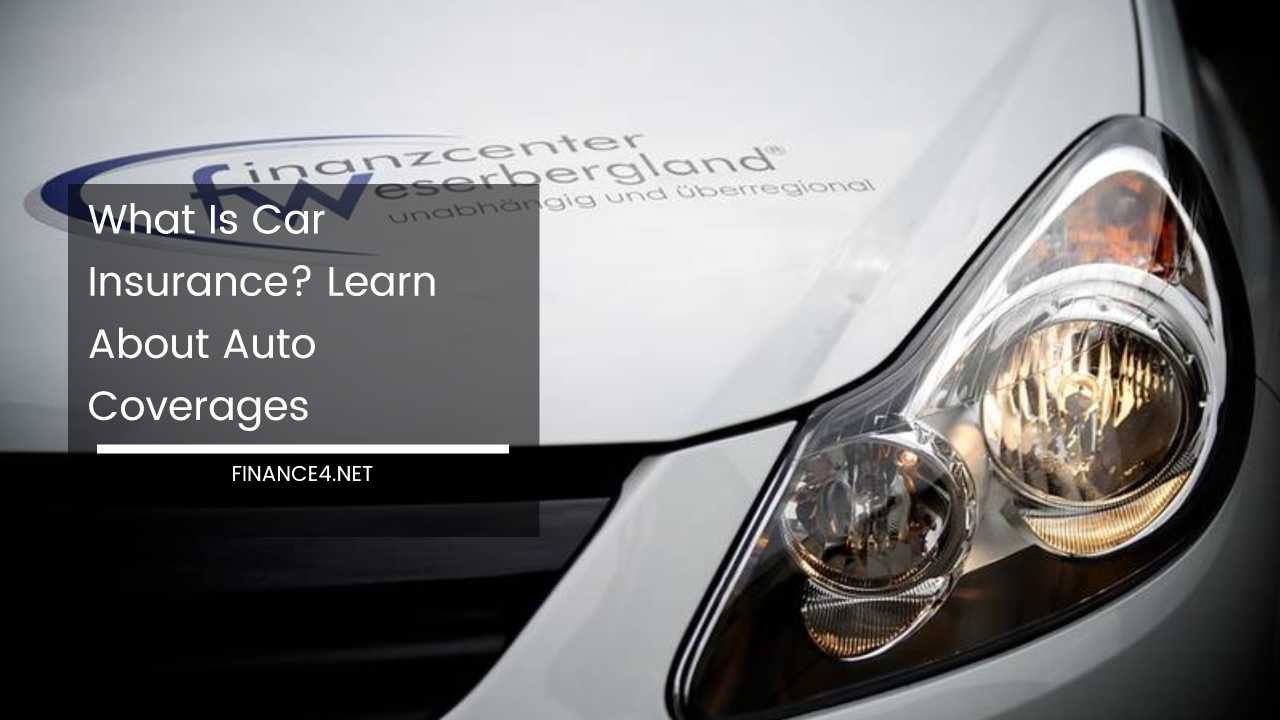Car Insurance Explained: Must-Have Coverages for Safe Driving

Car Insurance: Your Essential Guide to Navigating the Road with Confidence
Cruising down the highway with the wind in your hair – car ownership offers a sense of freedom and convenience. But along with the exhilaration comes responsibility.
One crucial aspect of responsible car ownership is having proper car insurance. This comprehensive guide dives deep into the world of auto insurance, explaining its purpose, exploring the different types of coverage available, and highlighting why it’s essential for every driver.
The Shield Against the Unexpected: Understanding Car Insurance
Car insurance acts as a financial shield, protecting you from the unforeseen events that can occur on the road. It’s a contract between you and an insurance company.
You pay a premium (a predetermined amount) periodically, and the company agrees to cover your financial losses arising from accidents, theft, or other covered perils. Think of it as a safety net – a financial safeguard in case the unexpected strikes.
Imagine a scenario where you accidentally cause an accident, damaging another car and injuring the driver. Without insurance, the repair costs and medical bills could leave you in a financial bind. Car insurance steps in during such situations, providing financial assistance up to a designated limit, depending on your chosen coverage.
Beyond Legal Necessity: Why Car Insurance is Crucial
In many states, having at least minimum car insurance coverage is mandatory to legally operate a vehicle. This minimum coverage typically includes bodily injury and property damage liability. However, the importance of car insurance goes far beyond legal requirements. Here’s why having it is essential:
- Peace of Mind on the Road: Accidents, no matter how cautious you are, can happen to anyone. Car insurance provides peace of mind, knowing that you’re not financially exposed in case of an unexpected event. You can focus on driving safely without the constant worry of potential financial ruin.
- Financial Protection in Case of Accidents: Accidents involving injuries and property damage can be extremely expensive. Car insurance safeguards you from financial hardship by covering repair costs, medical bills, and lost wages (depending on the coverage), up to the chosen limits.
- Protection from Uninsured Drivers: Imagine the frustration of being struck by a driver with no insurance. Uninsured motorist coverage protects you from such situations, covering your medical expenses, lost wages, and property damage caused by an uninsured or hit-and-run driver.
Tailoring Your Protection: A Look at Different Types of Car Insurance Coverage
Car insurance policies are a combination of various coverages, each designed to address specific situations. Understanding these coverages is essential to choose a plan that best suits your needs and budget. Here’s a breakdown of some common types of car insurance coverage:
- Bodily Injury Liability: This coverage pays for medical expenses, lost wages, and pain and suffering of others injured in an accident you cause. It also provides legal defense if sued by the injured party. Limits are typically set for each person and for the total accident.
- Property Damage Liability: This covers repairs to another person’s vehicle or property damaged by your car in an accident. This protects you from being responsible for the financial burden of fixing someone else’s car or property.
- Collision: This coverage pays for repairs to your car resulting from a collision with another vehicle or object. This coverage is often mandatory if your car is financed by a lender.
- Comprehensive: Protects your car from damage caused by theft, vandalism, fire, flood, weather events, and other specified events (check your policy details for specifics). Similar to collision coverage, it might be required if your car is financed.
- Uninsured/Underinsured Motorist Coverage (UM/UIM): This protects you from situations where the at-fault driver has no insurance (uninsured) or inadequate coverage (underinsured) to cover your injuries, lost wages, and car damage.
Choosing the Right Coverage: A Personalized Approach
Several factors influence the type and amount of car insurance coverage you need. Here are some key considerations to personalize your coverage:
- The Value of Your Car: Newer or more expensive cars typically require more comprehensive coverage to ensure proper financial protection in case of damage or theft.
- Your Driving Habits: If you drive frequently, commute long distances, or live in a high-risk area with a lot of traffic, opting for higher coverage limits might be prudent.
- State Minimum Requirements: Each state mandates minimum liability coverage amounts. Ensure your policy meets or exceeds these requirements to stay compliant with the law.
- Your Budget: Premiums vary depending on the coverage chosen, your driving record (past accidents and tickets), age, location, and the type of car you drive. It’s important to find a balance between adequate coverage and affordability.
Beyond the Basics: Additional Coverage Options for Enhanced Protection
Many insurance companies offer additional coverages for an extra premium. These add-ons can provide further protection and peace of mind:
- Roadside Assistance: This coverage provides help in case of breakdowns, flat tires, dead batteries, or even lockouts. It can include towing services, jump starts, and even tire changes, depending on the specific policy.
- Medical Payments Coverage (MedPay): This coverage pays for medical expenses for you and your passengers, irrespective of who’s at fault in an accident. This can be helpful for covering deductibles or co-pays associated with medical bills, especially if your health insurance doesn’t cover all accident-related expenses.
- Rental Reimbursement: This coverage helps offset the cost of renting a car while yours is being repaired after a covered incident. This can help maintain your daily routine while your car is out of commission.
- Gap Coverage: This can be particularly valuable if you lease or finance a new car. It covers the difference between the actual cash value of your car (at the time of an accident) and the amount you still owe on the loan or lease. This prevents you from being stuck paying for a car you no longer have.
- Personal Injury Protection (PIP): Available in some states, PIP is a broader coverage that can help cover medical expenses, lost wages, and even funeral costs arising from an accident, regardless of fault.
Understanding Your Policy: Don’t Be Afraid to Ask Questions
Car insurance policies can be complex documents filled with legalese. Don’t be afraid to ask your insurance agent questions to clarify any doubts you may have. It’s crucial to thoroughly read and understand your policy wording before finalizing it. Pay close attention to details like:
- Coverage Limits: These are the maximum amounts your insurance company will pay for covered expenses. Ensure the limits are sufficient to cover your potential needs.
- Deductibles: This is the amount you pay out of pocket before your insurance kicks in. Choosing a higher deductible can lower your premium, but remember you’ll be responsible for a larger upfront cost in case of a claim.
- Exclusions: These are events or situations not covered by your policy. Be aware of these exclusions to avoid any surprises later.
Finding the Right Insurance Provider: Shopping Around Pays Off
Car insurance prices can vary significantly between companies. It’s wise to get quotes from multiple insurers before making a decision. Consider factors like coverage options, customer service reputation, and price to find the best fit for your needs and budget.
Don’t be afraid to negotiate for a better rate, especially if you have a clean driving record or are bundling car insurance with other policies like homeowner’s or renter’s insurance.
Maintaining Your Coverage: Keeping Your Insurance Active
Once you have a car insurance policy in place, it’s important to maintain it by making timely premium payments. A lapse in coverage can lead to policy cancellation, leaving you financially vulnerable in case of an accident. Additionally, some states may impose penalties for driving without insurance.
Maintaining a Good Driving Record: Reap the Rewards of Safety
The best way to keep your car insurance premiums low is to maintain a good driving record. Avoid traffic violations like speeding or reckless driving. Completing defensive driving courses might also help lower your premiums in some cases.
Final Thoughts: Car Insurance – Peace of Mind for the Road
Car insurance is an essential investment for any car owner. It provides peace of mind, knowing you’re financially protected in case of the unexpected.
By understanding the different types of coverage available, choosing the right plan for your needs, and maintaining good driving habits, you can ensure a smooth and secure journey on the road.
Remember, car insurance is not just about fulfilling a legal requirement; it’s about protecting yourself and your finances from the unforeseen events that can occur on the road.



